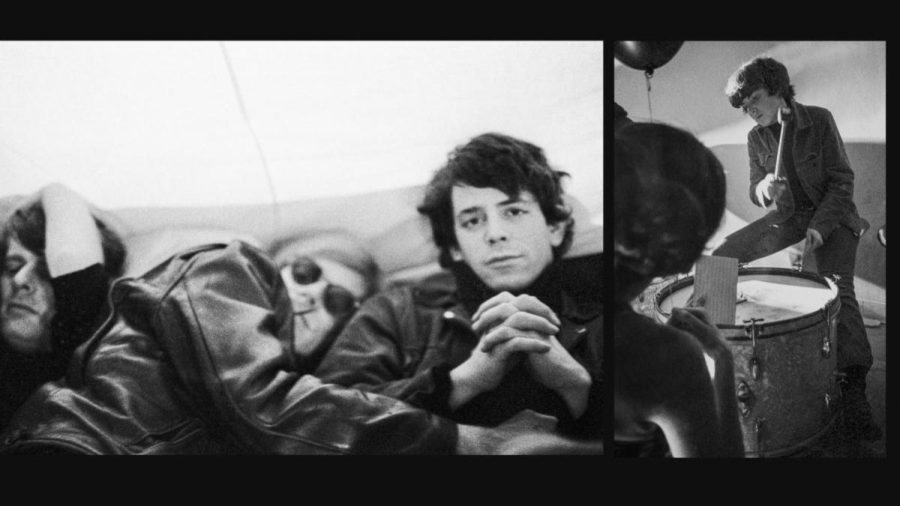Review: The obsessive beauty of ‘The Velvet Underground’
Todd Haynes’ first documentary is an eccentric look at the avant-garde legends of rock ‘n’ roll.
Todd Haynes’ first documentary, “The Velvet Underground,” hones in on the emotional core of the iconic band. Haynes weaves together archival footage and recent interviews to create a heartfelt portrait of the band and its members. (Image courtesy of Apple TV+)
October 27, 2021
Todd Haynes’ latest film, “The Velvet Underground,” is a relentless charmer that stands out among the most personal of music documentaries because every second of it shows the touch of an obsessive fan. Although it’s his first documentary, Haynes exhibits the same eye for the personal that he did in his other musician-focused works: the chilling stop-motion Barbie film “Superstar: The Karen Carpenter Story,” the Bowie and “Citizen Kane”-inspired “Velvet Goldmine,” and the ambitious “I’m Not There” (in which he cast six actors as variations of Bob Dylan). He has always seemed more interested in the humanity and turmoil behind the work of his chosen musicians than in finding meaning in their artistic output. Despite the ostensibly informational purpose of his first foray into documentary, he isn’t afraid to get stuck in the emotional heart of his subjects.
Arguably the most dangerous pitfall for a music documentary is relying too heavily on archival performance footage. Haynes avoids this by operating under the assumption that the viewer is as big a fan of the Velvet Underground’s brand of avant-garde rock ‘n’ roll as he is, or simply not caring if they aren’t. The documentary is largely composed of new and old interviews with the band’s members and those in their orbit set alongside clips and photos from their lives on, but mostly off the stage. This restraint makes it all the more memorable when Haynes does elect to show a performance.
One highlight is undoubtedly the repeated interjections from The Modern Lovers’ founder and teenage Velvet Underground-superfan Jonathan Richman, who is authentic and almost painfully charming as he recounts hanging out backstage as a misfit highschooler at the countless shows he attended. It’s Haynes’ willingness to spend time on stories and perspectives such as Richman’s that make his documentary about larger-than-life musical icons feel lovingly intimate. He also seems intent on keeping the film about the band as a collective, not centered on frontman Lou Reed.
The sense of wonder in the freewheeling flow of the film is almost childish and makes it feel right at home with Haynes’ other work. Although “The Velvet Underground” is in many respects a surprisingly conventional documentary compared to his previous films, at times, it feels like the freakiest episode of “Behind The Music” ever made. One might expect it to be weirder given his record, but this in no way detracts from the quality of the film. “The Velvet Underground” is boundary-pushing enough to keep things interesting.
Haynes proves himself as adept a curator of found footage as he is a director of original material. The footage and photos he collects are reflective of the eclectic nature of the band’s influences, and are oftentimes beautiful on a purely visual level. The few moments where he utilizes montage, particularly at the beginning of the film, viscerally set the tone for what’s to follow.
He chooses well when deciding what parts of the band’s whirlwind career to hone in on. Haynes spends a generous amount of time near the beginning on Lou Reed and John Cale’s respective upbringings and early years in New York City, which illuminates their enigmatic personas in a loving and non-invasive way. Most of the first half follows the development of their iconic debut “The Velvet Underground & Nico,” shepherded by Andy Warhol and his tumultuous incubator, The Factory. Haynes veers into fascinating digressions about the politics and goings-on of Warhol’s world, while providing a ton of very specific details in places where the story could easily be told without it. He does so to create a distinct sense of mood and place, but he never loses focus. “The Velvet Underground” is by no means a mess — it paradoxically remains feeling tightly wound.
Overall, it is a sprawling and unabashedly fawning project that rises to the task of chronicling one of the most unusual and influential bands ever by focusing on the emotions and not worrying about getting lost along the way. It adheres effectively to the important points of a traditional documentary, but, like all his work, “The Velvet Underground” is something that only Todd Haynes could have made.
Contact Holden Lay at [email protected].
























































































































































